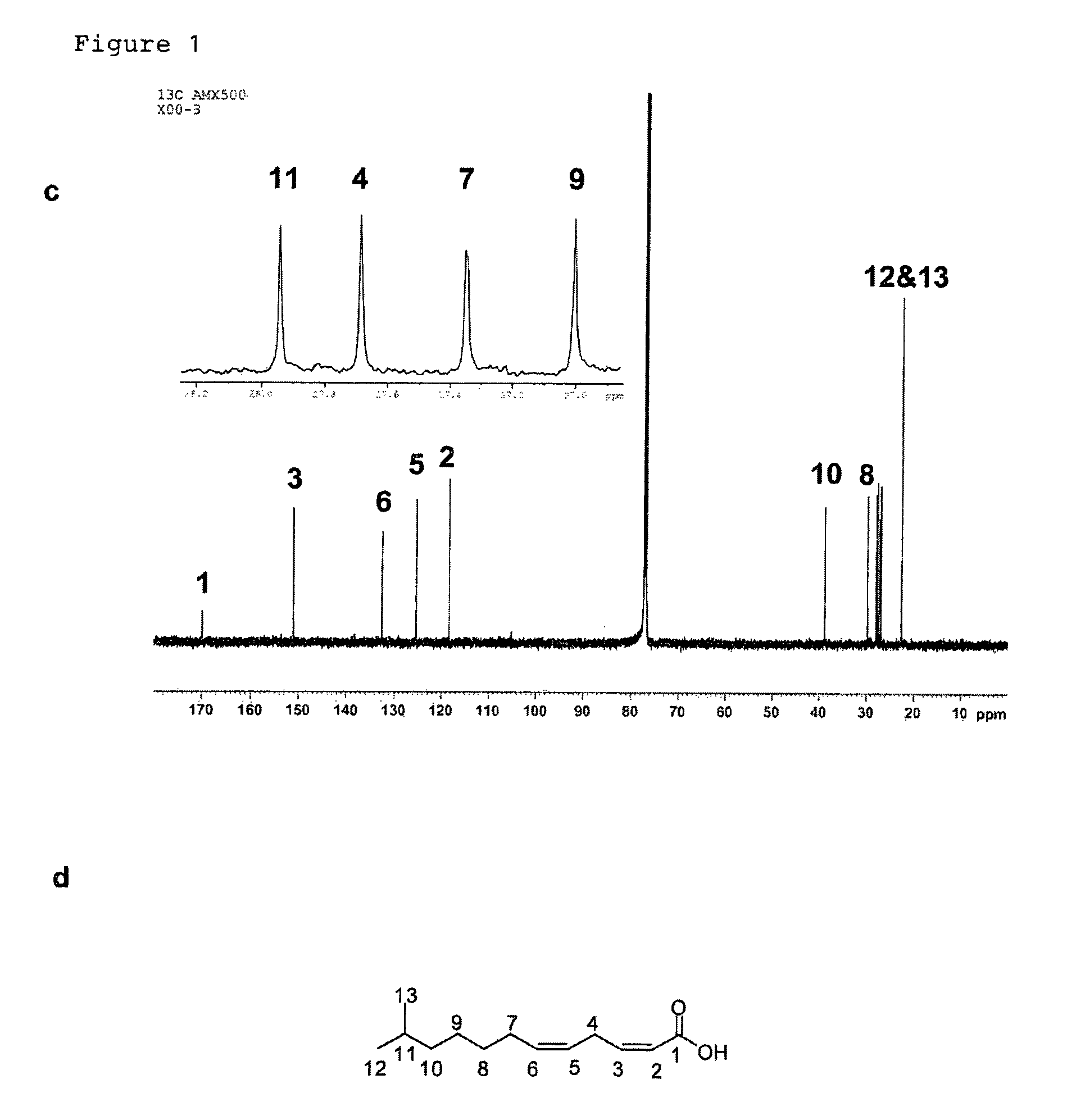Antimicrobial compounds and uses thereof
a technology of antimicrobial compounds and compounds, applied in the field of new drugs, can solve problems such as serious public health concerns of infections, and achieve the effect of inhibiting biofilm formation
- Summary
- Abstract
- Description
- Claims
- Application Information
AI Technical Summary
Benefits of technology
Problems solved by technology
Method used
Image
Examples
examples
[0131]Bacterial strains and plasmids. Xanthomonas campstris pv. campestris strain XC1, its rpfC deletion mutant Xc1ΔC, have been previously described (Wang et al., 2004; He, Y. W et al, Dual Signaling Functions of the Hybrid Sensor Kinase RpfC of Xanthomonas campestris Involve Either Phosphorelay or Receiver Domain-Protein Interaction. J. Biol. Chem. 2006, 44: 33414-33421). Burkholderia multivorans ATCC17616, B. stabilis LMG 14086, B. anthina LMG 16670, and B. pyrrocinia LMG 14191 were reported previously (Mahenthiralingam et al., 2000; Rose et al., 2009). The broad-host-vector pLAFR3 was kindly provided by Allen Kerr. For production of DSF-like molecules, bacterial strains were grown in YEB medium (Wang et al., 2004) for about 24 h till OD600=3.0 at various temperatures as indicated in Table 1.
[0132]Engineering MDEA overproduction strains. The coding region of Bmul5121, which is the homologue of Xcc DSF coding gene rpfF (Wang et al., 2004), was amplified from B. multivorans via PCR...
PUM
| Property | Measurement | Unit |
|---|---|---|
| pH | aaaaa | aaaaa |
| flow rate | aaaaa | aaaaa |
| pH | aaaaa | aaaaa |
Abstract
Description
Claims
Application Information
 Login to View More
Login to View More - R&D
- Intellectual Property
- Life Sciences
- Materials
- Tech Scout
- Unparalleled Data Quality
- Higher Quality Content
- 60% Fewer Hallucinations
Browse by: Latest US Patents, China's latest patents, Technical Efficacy Thesaurus, Application Domain, Technology Topic, Popular Technical Reports.
© 2025 PatSnap. All rights reserved.Legal|Privacy policy|Modern Slavery Act Transparency Statement|Sitemap|About US| Contact US: help@patsnap.com



